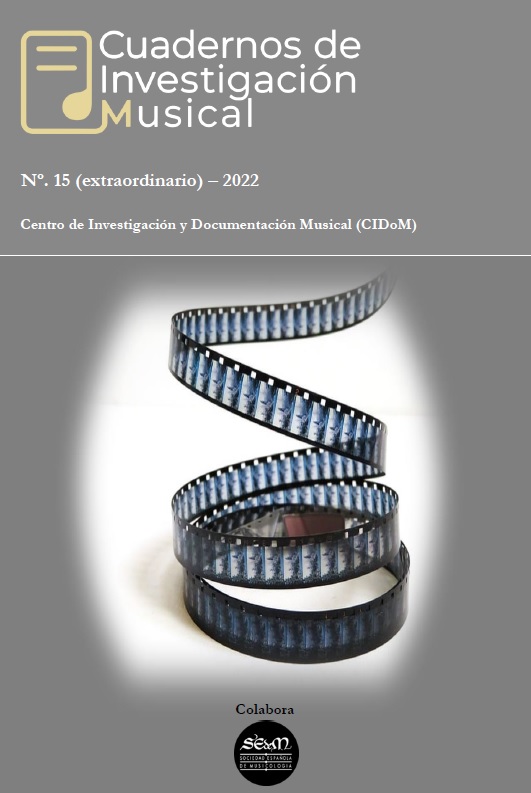Madonna’s Music Videos as Audiovisual “Performances”. Forty years of popular culture
Main Article Content
Abstract
In recent years, the concept of “performance” has taken on an increasingly specific value in reference to issues of education, evaluation, and perception. It is a word recalling not only the performances we do, when necessary, but the entertainment world, where music and vision combine to generate sensational events and the magic of fiction. In The Society of the Spectacle, written by Guy Debord in 1967, the author claimed that the spectacle had become an “integral part of our very existence”. That was true at the time, and it is still true today. However, in the contemporary visual age we are hyper-and-radically-connected and we are transformed into “sounding images” projected onto screens without our interrelational human parts. Madonna Louise Veronica Ciccone’s career began in the Early 80s and it has not ended yet. Over those forty years, Madonna has constructed an innovative “poetics of performance” that has been studied by numerous sociologists around the world.
Article Details
Los autores de los artículos mantienen el copyright, no recibirán ninguna contraprestación económica por el trabajo y el mismo siempre será reconocido como exclusivamente suyo. La revista se compromete a proteger la integridad y originalidad del artículo, así como los derechos de autor que correspondan. Los autores son los únicos responsables del material, textos e imágenes que utilizan en sus respectivos trabajos, debiendo respetar siempre los derechos de autor de terceras personas, por lo que la revista no se hace responsable de lo contenido en este tema respecto al trabajo de los autores.
References
Baroncini E. (1987). Madonna. Milan: Forte.
Bauman, Z. (2000). Liquid Modernity. Oxford: Malden-Blackwell.
Bauman, Z. (2008). Vite di corsa. Come salvarsi dalla tirannia dell’effimero. Bologna: Il Mulino.
Berton, L. (2007). Videoclip. Storia del video musicale dal primo film sonoro all’era di You-Tube. Milan: Mondadori.
Calefato, P. (1999). Moda, corpo, mito. Storia, mitologia e ossessione del corpo vestito. Rome: Castelvecchi.
Corsi M. (2003). Il coraggio di educare. Il valore della testimonianza. Milan: Vita e Pensiero.
Debord, G. (1967). Society of the Spectacle. London: Rebel Press.
Gay, V. P. (1992). Freud on sublimation. Reconsiderations. Albany: State University of New York Press.
Giliberti, E. (2002). Madonna. Come si costruisce un corpo-citazione. In M. Baroni (Ed.), Streghe, madonne e sante postmoderne. Eccedenze femminili tra cronaca e fiction (pp. 49-66). Rome: Meltemi.
Guilbert, G.-C. (2002). Madonna as Postmodern Myth. How One Star’s Self-Construction Rewrites Sex, Gender, Hollywood, and the American Dream. Jefferson-London: McFarland & Company.
Hernwall, P. (2009). The Space of the Body-Self. Construction of Gender Identities Online, in F. Deriu, L. Esposito & A. Ruggiero (Eds), Metropoli e nuovi consumi culturali. Performance urbane dell’identità (pp. 177-195). Roma: Carocci.
Hofstede, G. H. (2010). Cultures and organizations: software of the mind. Intercultural cooperation and its importance for survival. New York: McGraw-Hill.
Kaplan E. A. (1993). Madonna Politics: Perversion, Repression, or Subversion? Or Masks and/as Master-y. In C. Schwichtenber (Ed.), Madonna Connection. Representational Politics, Subcultural Identities, and Cultural Theory (pp. 149-165). St Leonards: Allen & Unwin.
Levitin, D. J. (2008). Il mondo in sei canzoni. Come il cervello musicale ha creato la natura umana. Turin: Codice.
Liggeri, D. (2006). Musica per i nostri occhi. Storie e segreti dei videoclip. Milan: Bompiani.
Macrì, T. (1996). Il corpo postorganico. Milan: Costa & Nolan.
McGuire, W. (1974). Lettere tra Freud e Jung (1906-1913). Turin: Bollati Boringhieri.
Schechner, R. (1984). La teoria della performance. 1970-1983. Rome: Bulzoni.
Schechner, R. (2013). Performance studies. An introduction. London: Routledge.
Sibilla, G. (2005). I linguaggi della musica pop. Milan: Bompiani.
Stramaglia, M. (2015). Love is music. Adolescents and the world of spectacle. Saarbrücken: EAI.
Tancredi, P. (1999). Sfumature di nero nei video di Madonna. In S. Petrilli (Ed.). Nero (pp. 129-136). Lecce: Piero Manni.
Turner, V. (1982). From Ritual to Theatre. The Human Seriousness of Play. New York: PAJ Publications.
Turner, V. (1986). Antropology of Performance. New York: PAJ Publications.
Van den Berg M. & Ter Hoeven, C. L. (2013). Madonna as a symbol of reflexive modernisation. Celebrity Studies, 4 (2), pp. 144-154.
Viñuela E. (2018). Bitch She’s Madonna. La Reina del Pop en la Cultura Contemporánea. España: Dos Bigotes.
